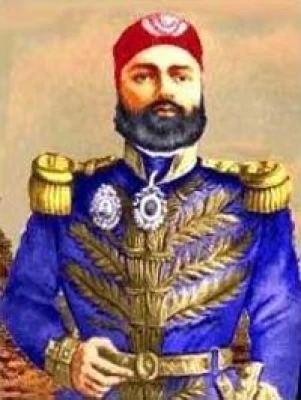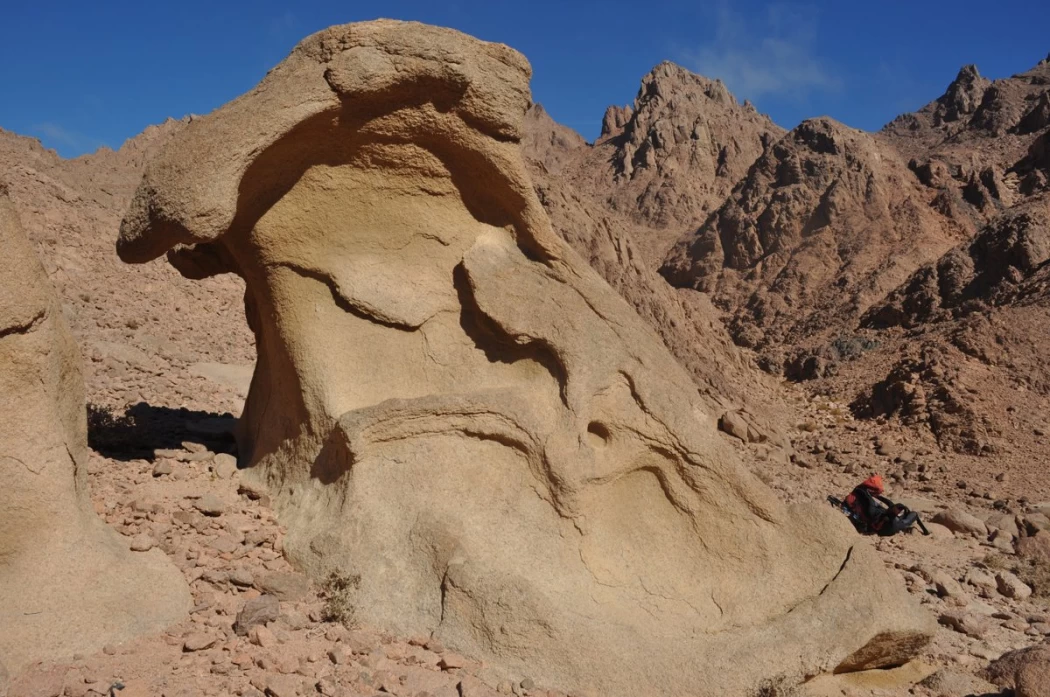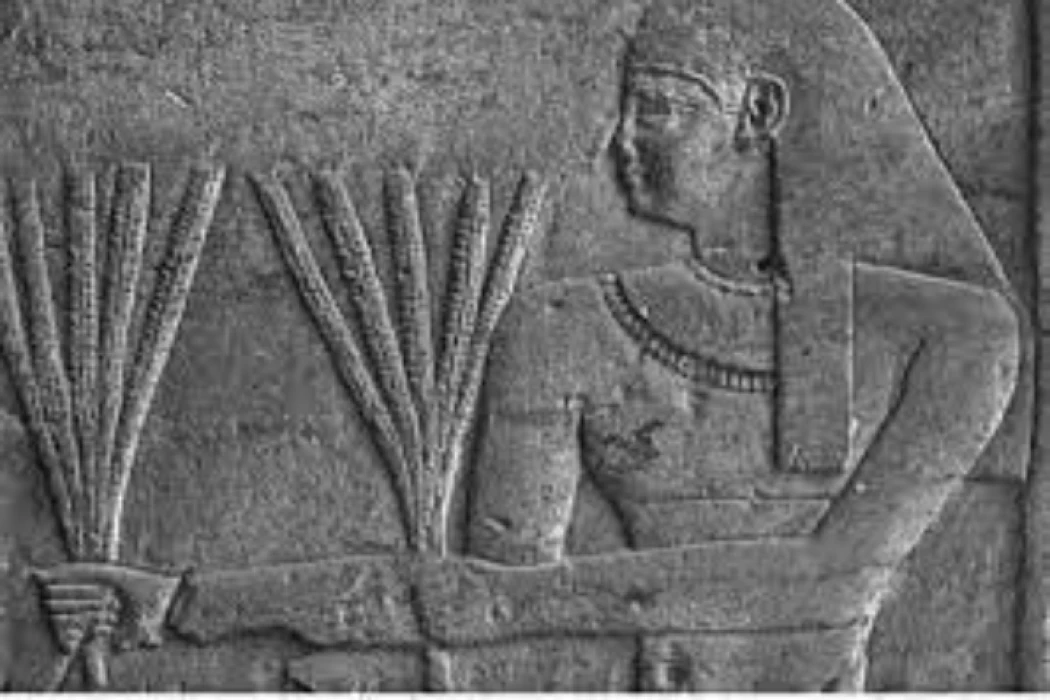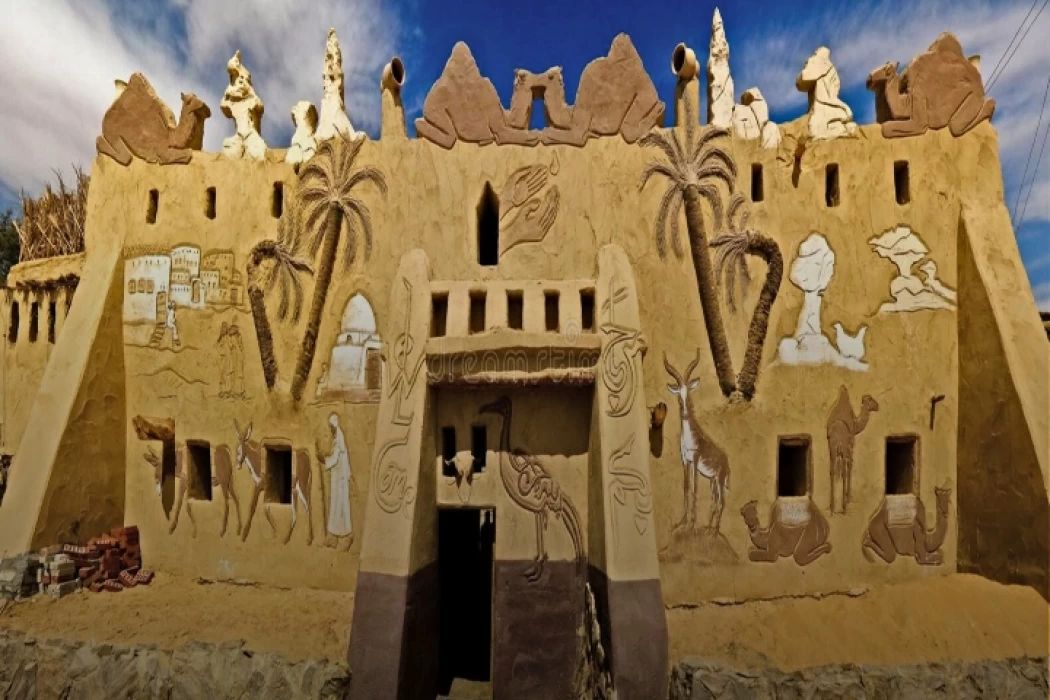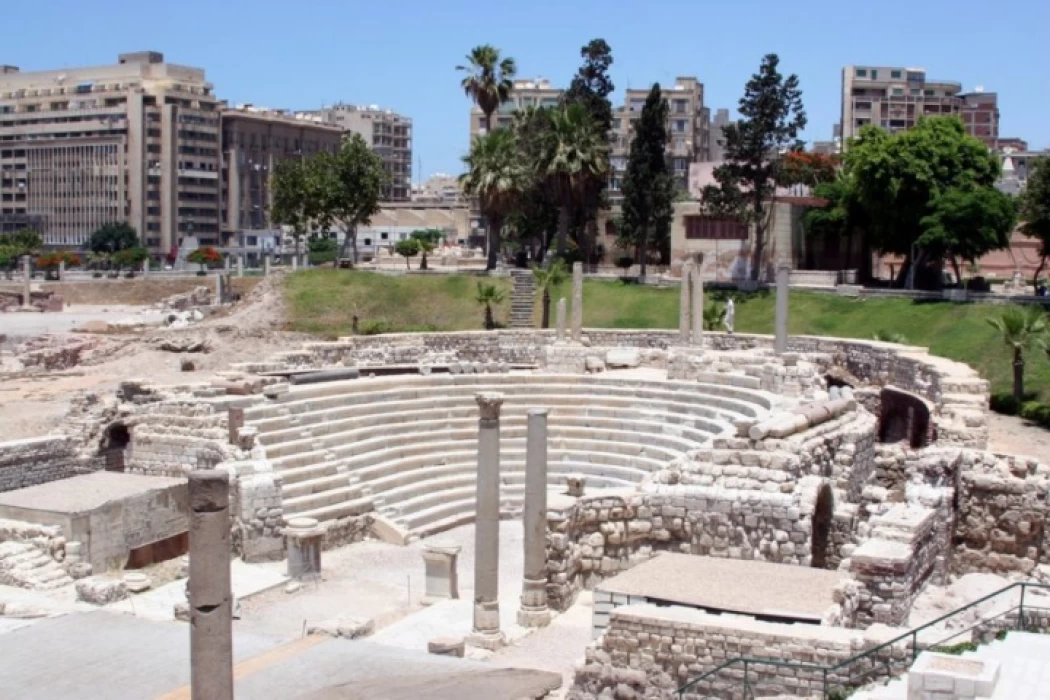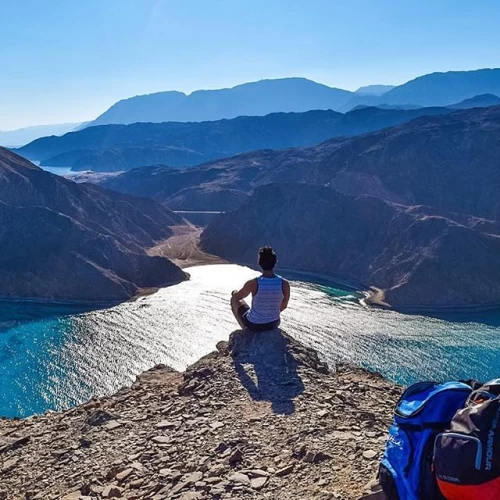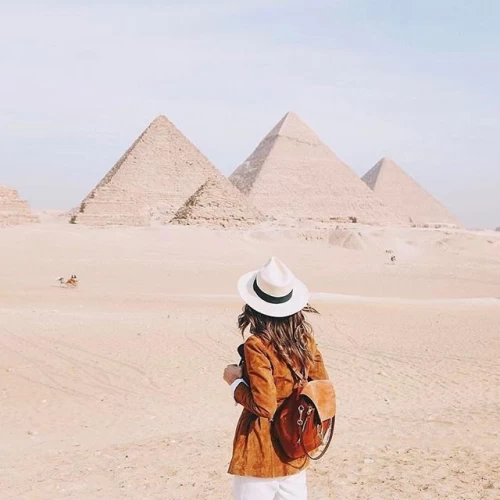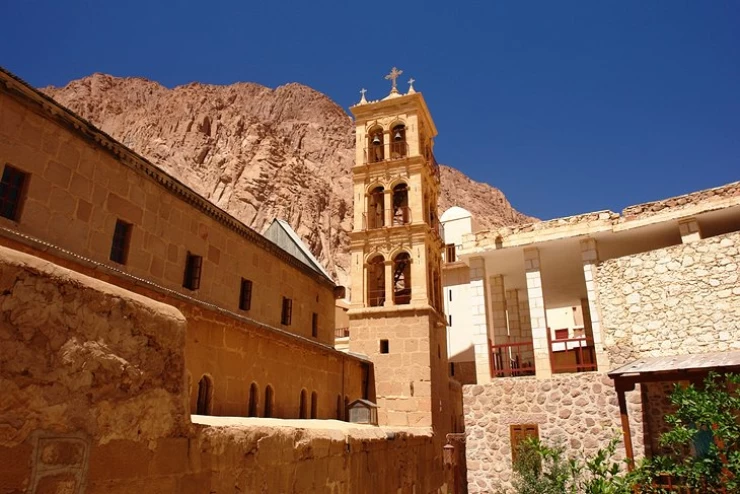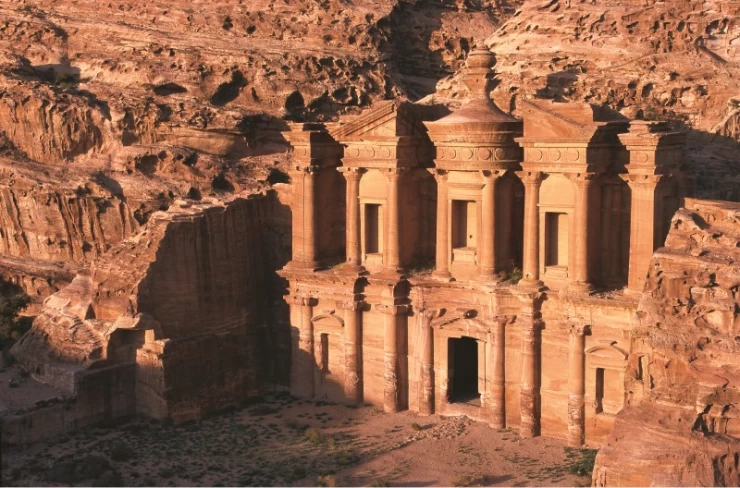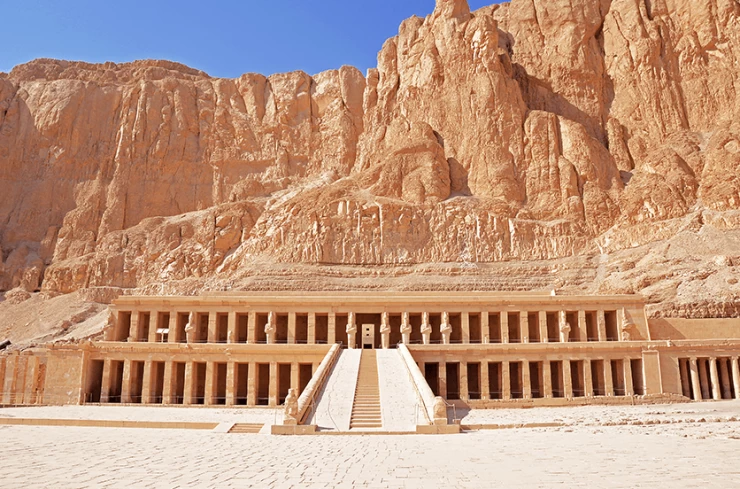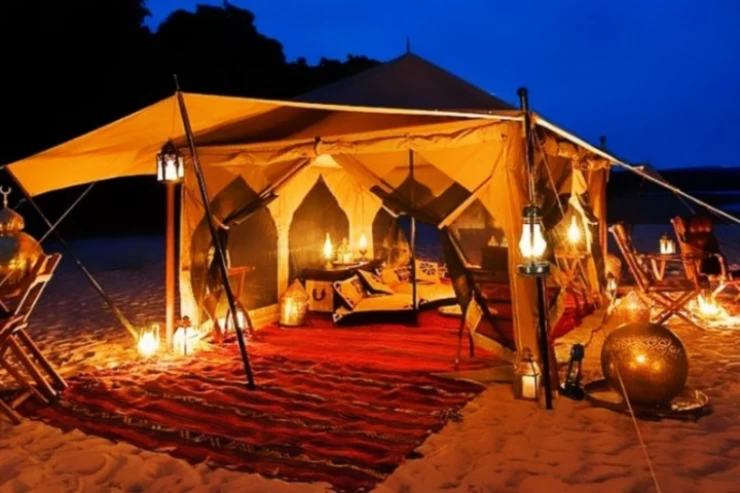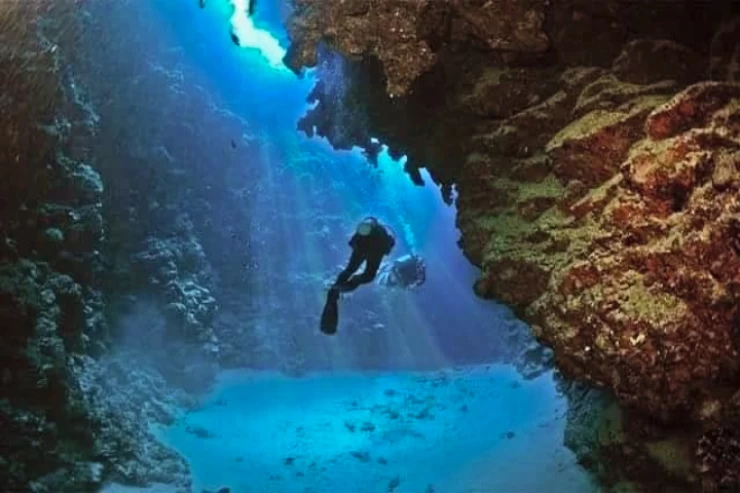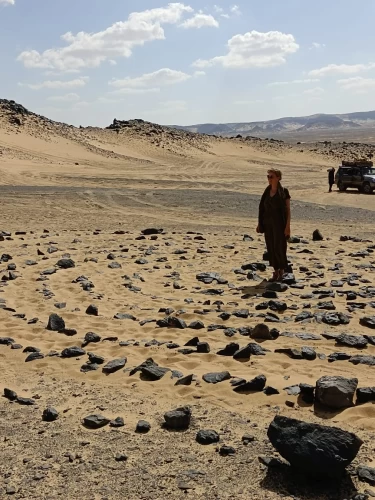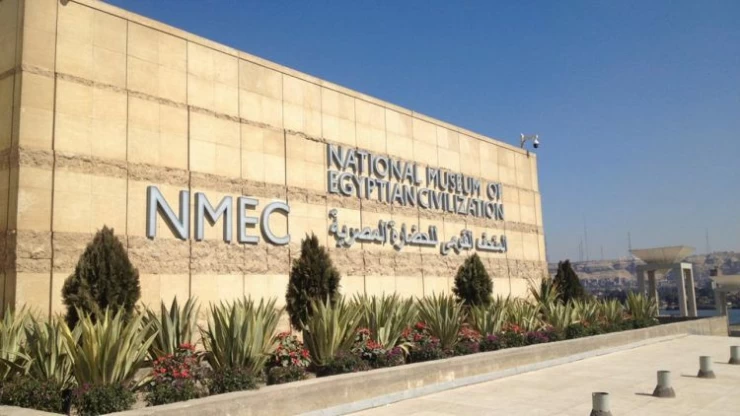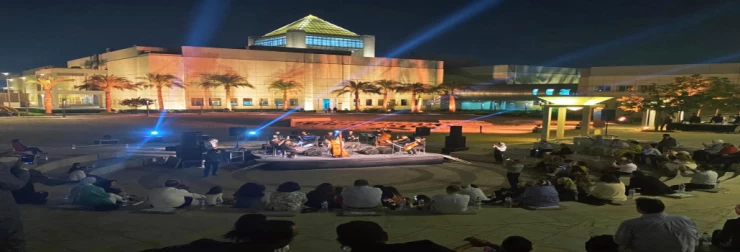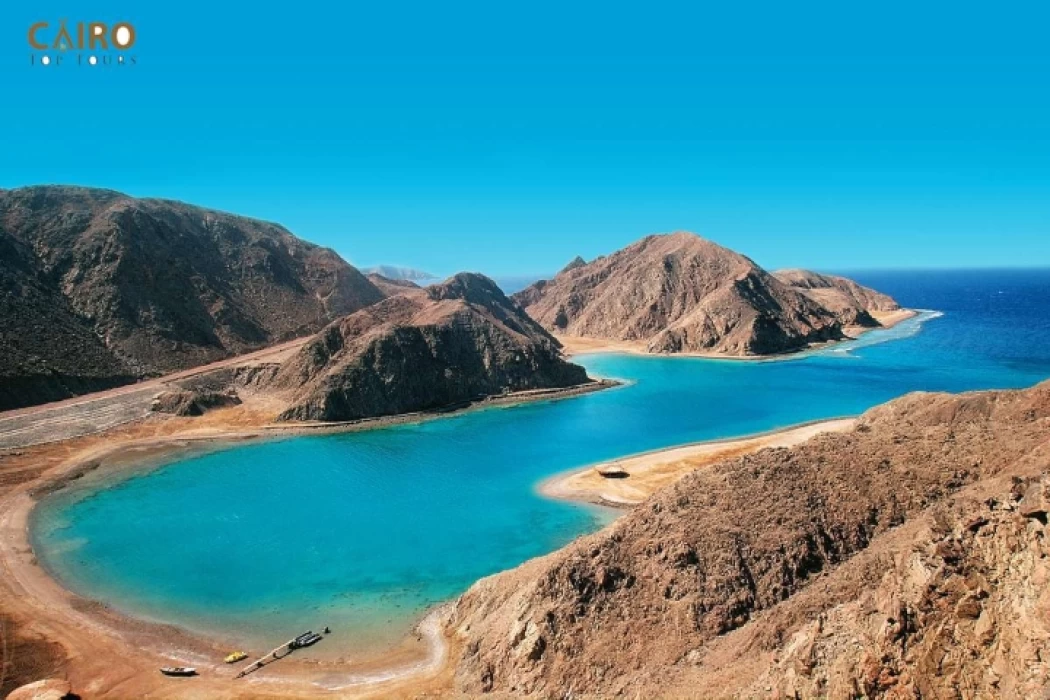
Taba, Egypt
Taba is an Egyptian city belonging to the South Sinai governorate located at the head of the Gulf of Aqaba between the eastern Taba mountain range and plateaus on the one hand, and the waters of the Gulf of Aqaba on the other. The city has a population of about 3000 people, and its area is about 508.8 acres, and it is about 240 km north of Sharm el-Sheikh. The city represents a great historical and strategic value for its privileged location, which oversees the borders of four countries: Egypt, Saudi Arabia, Jordan, and Palestine, as it is about 7 km east of the Israeli port of Eilat, located facing the Saudi border in a direct direction to the Tabuk military base, and is the last Egyptian urban points on the Gulf of Aqaba at the meeting of the only seaport in Jordan, the port of Aqaba.
On February 13, 1841, an Ottoman Firman was issued, by which Muhammad Ali and his sons after him were granted the rule of Egypt and Sudan, and a map was attached to the firman to clarify the borders of Egypt, which placed the vast majority of Sinai inside Egypt, and the situation continued in this state until 1892 when the Ottoman sultan sent a firman to Egypt depriving it of half of Sinai, so Britain intervened and south on a point located three miles west of the Aqaba fortress. In 1906, another crisis occurred when Turkish troops advanced to Taba, a major crisis occurred, after which Britain intervened for the second time and forced the Ottomans to withdraw, after which it was decided to build the Egyptian border line with numbered signs. Taba has since settled as part of the Egyptian national territory.
After the October War, a peace agreement was concluded between Egypt and Israel in 1979, according to which Israel began its withdrawal from the Sinai, and in late 1981, during which the last stage of this withdrawal was being implemented, the Israeli side sought to create a crisis that hindered this stage, and this was represented by raising problems about the placement of 14 border markers, the most important of which was Mark (91) in Taba, which led to the conclusion of an agreement on April 25, 1982, the final decision on the marking of disputed borders should be made by the provisions of Article VII of the peace treaty The agreement between the two countries stipulates that disputes regarding the application or interpretation of the Treaty shall be resolved through negotiations and that if such disputes cannot be resolved through negotiations, they shall be resolved through conciliation or referred to arbitration. 3 months after this agreement, Israel opened the Sonesta Hotel and a tourist village and introduced Border Guard troops. The Egyptian government responded by forming the National Committee for the Defense of Taba or the Higher National Committee for Taba, and the Egyptian Foreign Ministry formed a committee to prepare the arbitration party, following the decision of the Israeli cabinet to approve the arbitration, the party agreement was signed with the participation of Shimon Peres on September 11, 1986, which Israel accepted under pressure from the United States. Egypt aimed to oblige the Israeli side to arbitrate according to a strictly defined schedule and limit the task of the arbitral tribunal to fix the locations of the 14 disputed marks. On September 29, 1988, the verdict of the arbitration court in Geneva, Switzerland, was announced in favor of Egypt, confirming that Taba is Egyptian, and on March 19, 1989, the historic ceremony of raising the flag of Egypt was held, declaring sovereignty over Taba and proving Egypt's right to its land.
On May 13, 1985, the Prime Minister's Decision No. 641 was issued to form the Taba National Committee headed by Esmat Abdel Magied and with a membership of 24 experts, including 9 legal experts, 2 geographers and historians, 5 senior diplomats of the Ministry of Foreign Affairs, 8 military and military survey experts, and the Egyptian Ministry of Foreign Affairs entrusted the task of preparing memoranda to the arbitration committee, which was formed under the chairmanship of Nabil: From the Ministry of Foreign Affairs (Ibrahim Yusri, Badr Hammam, Hassan Issa, Ahmed Abu Al-Khair, Mahmoud Othman, Ezzedine Abdel Moneim, Wajih Hanafi, Ahmed Fathallah, Mohammed Juma, Hussein Mubarak, Mahmoud Sami, Fayza Abu Naga, Ahmed Maher, Mahab Moqbel, Majid Abdel Fattah), from the Ministry of Defense (Abdul Hamid Mohsen Hamdi, Farouk Labib, Khairy Al-Shamma), from the Ministry of Justice (Amin al-Mahdi, Fathi Naguib), from the Ministry of Petroleum (Ahmed Abdul Halim, Salah Hafez), Mofid Shihab, Younan Labib Rizk, Ahmed Sadiq al-qushairi, Youssef Abu al-Hajjaj, Samih Sadiq, Salah Amer, Wahid Rafat, Mohammed El-Shenawy, George Abu Saab, Talaat Al-ghunaimi, Mohammed Bassiouni, Hussein Hassouna, Mohammed Abdel Fattah Mohsen. The Egyptian Defense Committee hired Dr. Drake Bout in exchange for Israel's hiring of Dr. Lotter Bakht, both of whom are professors of international law and have international experience in this type of dispute. The international arbitration panel included 5 members represented by: Dr. Hamid Sultan for the Egyptian side, Ruth Lapidot for Israel, and the other three: pellet, former president of the French Court of Cassation, Schindler, The hearings were held with the arbitral tribunal and began with the submission of an opening memorandum in May 1987, the first hearing was in December 1986, then the court received counter-briefs and responses from the parties in October 1987, and they agreed to submit a closing memorandum in January 1988, in addition to two rounds of oral arguments in March and April of the same year, the pleadings lasted 3 weeks until the verdict in favor of Egypt on September 29, 1988 inside the Great Council Hall of the official headquarters of the government of the province of Geneva, in the presence of the only objection was from the Israeli side, and the verdict was signed in 230 pages.
The Sonesta Taba hotel and the Rafi Nelson village are two facilities set up by Israel on Egyptian Taba land during its occupation of the city, in violation of the provisions of the peace treaty between Israel and Egypt and the April 25, 1982 agreement on the interim procedure for resolving border issues. The hotel was opened on November 15, 1982, under the name Sonesta Taba, to form Israel a kind of imposition of Israeli sovereignty over the area, until the international arbitration tribunal between Egypt and Israel ruled on September 29, 1988, that Taba was Egyptian land, and the ownership of all tourist facilities in Taba moved to Egypt, and the hotel's name was later changed to Hilton Taba.
In October 2004, the cities of Taba and Nuweiba were rocked by several simultaneous bombings, targeting the Hilton Taba hotel, the Land of the Moon camps, and the Badia, on Ras Shaitan island in Nuweiba, using three car bombs. The explosions killed 7 Egyptians and 24 Israelis, injured 135 others, and also destroyed ten floors of the Hilton Taba hotel, which was targeted by a Ford brand car carrying one hundred kilograms of explosives.
The city has a population of 3000 people, and its area is approximately 508.8 acres, and it is about 240 km north of Sharm el-Sheikh. It oversees the borders of four countries: Egypt, Saudi Arabia, Jordan, and Israel, where it is about 7 km east of the Israeli port of Eilat, located facing the Saudi border in a direct direction to the Tabuk military base, and is the last Egyptian urban point on the Gulf of Aqaba at the meeting of the only seaport of Jordan, the port of Aqaba. Taba is characterized by its coastline, which overlooks a range of beaches, bays, lakes, and diving spots.
On May 8, 2014, floods hit the South Sinai region, including the city of Taba, which suffered from the effects of severe destruction as a result of the backfilling of floodwaters during the expansion works of the Taba International road, which severely damaged many hotels and tourist facilities, disrupted traffic to and from the Taba crossing, electricity was cut off as a result of the crash of high-pressure towers, washed away Transformers, ruptured high-voltage cables, and the city was isolated as a result of the destruction of the rushing waters of Taba international road, while some people were lost and others were injured. After the disaster, the maximum readiness level was raised in South Sinai governorate, several buses were paid to transport tourists, citizens, and labor to the cities of Sharm el-Sheikh and Cairo, food commodities, water carts, water suction cars were paid, electricity was connected to Taba station and camps were opened for shelter. To avoid the consequences of these natural disasters in the future, the Egyptian government has initiated urgent projects to reduce the risk of floods in the cities of Taba and Nuweiba at a total cost of 300 million pounds, including the construction of 8 dams, 3 lakes in Nuweiba, in addition to the establishment of lakes, directional barriers, dams, sewers and crossings under roads in Taba city. The first stage of protecting Taba city cost 50 million pounds and included the construction of an industrial canal with a length of 2750 meters and a width of 50 meters with a depth of 2.5 meters in Wadi muqbala, the construction of a rubble dam in Wadi marakh with a height of 9 meters and a width of 130 meters, in addition to the creation of an artificial lake and a rubble guide barrier with a length of 650 meters, an Irish crossing on the Taba/Nuweiba international road, in addition to the construction of an industrial canal with a length of 1150 meters and a width of 70 meters with a depth of two meters. In Wadi Qurna, an artificial lake with a length of 120 meters, a width of 70 meters, and a depth of 6 meters was created, and a drainage channel was created in Wadi Taba with a length of 450 meters, a width of 345 meters and a height of 2.5 meters.
The city has many distinctive tourist attractions, including the flag stand, a monument to the site of the raising of the Egyptian flag on the liberated land of Taba on March 19, 1989. The typical Bedouin village, which includes 198 Bedouin houses, a school, a health unit, and 60 shops and youth centers, was established to serve Bedouin communities, especially the marakh Valley in Taba, at a cost of up to 50 million pounds. In addition to the Taba Museum, which preserves the history of the sights of the city. It includes three halls containing more than 700 artifacts that are an archive of the life of the people of South Sinai from the Pharaonic era to the modern era.
Located 15 km south of Taba, fjord Bay is an amazing diving spot that is embraced and protected by a picturesque natural Bay of coral reefs in an unforgettable sight. The Bay is suitable for diving enthusiasts and professionals, as the hole area attracts diving professionals, the entrance to which can be reached by a huge group of corals at a depth of 16 meters, to begin the journey inside the hole to a depth of 24 meters, during which divers witness rare scenes of marine life, including seeing open sea fish feeding on small glass fish and silverfis, but for less experienced diving enthusiasts, the alternative is the banana area, a shallow spot of coral that resembles in shape a banana fruit, which reaches a maximum depth of 12 meters and harbors a variety of Fish and reefs.
Taba Reserve, which is one of the most favorite places among tourists in the city, contains caves and mountain passes, valleys, the most famous of which are Wadi Watir, sledge, Sawana palm, and Ain Khadra oasis, in addition to rare species of animals, 50 species of birds, and more than 450 rare plants.
The colorful Valley, colorful groove, or canyon is one of the natural wonders of the Taba Reserve. It is a labyrinth of colorful Sandy rocks, the height of which in some places reaches 40 meters. This valley, which stretches deep into the desert mountains, was formed by rainwater and winter torrents that dug channels for it in the middle of the mountains after it had been flowing for hundreds of years. The colorful Valley got its name thanks to the color shades that coat its walls and the veins of mineral salts that draw lines on its sand and limestone and give it crimson, orange, silver, gold, purple, red, and yellow colors.
Pharaoh Island is 10 km from the city of Aqaba and 30 meters from the Sinai shore, and the archaeological fortress of Saladin is located there, which was created by the commander Saladin in 1171 AD, to repel the raids of the Crusaders, and protect the Egyptian pilgrimage route through Sinai. In 1182 AD, Prince Arnat, the owner of the Karak fortress, besieged the island to close the Red Sea to Muslims, monopolizing the trade of the Far East and the Indian Ocean by capturing Ayla in the North (now Aqaba) and Aden in the south, so the just Abu Bakr ibn Ayyub confronted him on the instructions of his brother Salah al-Din, and this was a prelude to the site of Hattin. The castle contains defensive facilities, a weapons manufacturing workshop, a military Assembly Hall, soldiers ' rooms, a bread oven, grain stores, a steam bath, water tanks, and a mosque established by Prince Hussam al-Din Baghel bin Hamdan. The castle was built of granite fiery stone taken from the hill on which the castle was built.
Taba Port is a tourist seaport that started as a small yacht marina on June 5, 2005 and was developed into an integrated tourist commercial port from which yacht trips to the Jordanian port of Aqaba depart. The Red Sea Ports Authority owns a 51% share of the port, and the port is managed by a joint stock company with Taba Heights and Taba Hotels. The port is working to activate the tourism process in the region by receiving tourist delegations coming to Taba from the port of Aqaba, which contributes to the revival of tourist traffic in Egypt. The Egyptian government has also launched a new project to develop the port to turn it into a port suitable for exporting Egyptian crops for 50 million pounds, to shorten the time of transporting agricultural products to the port of Aqaba from a total number of hours ranging from 24 to 36 hours to 45 minutes at most on fast trips that can transport 20 thousand trucks by ferry annually. The development plan includes the creation of passport departments, port security, veterinary and Agricultural Quarantine, export control, civil defense, fire fighting, parking areas, a seawater desalination unit, restrooms for workers, a gas station, and a new giant lighthouse.
In the late nineties, Taba airport was developed into an international airport for 36 million pounds, and the development work included lengthening the main and auxiliary corridor of the airport with a length of 4 km and a width of 45 meters and equipping it to receive aircraft at night according to modern airport systems. The aircraft parking lots have also been expanded to accommodate 12 large and medium-sized aircraft and a new passenger terminal has been constructed to accommodate 500 passengers per hour with the provision of all modern equipment to achieve liquidity in passenger traffic and speed of completion of procedures to serve tourist traffic in Taba and Nuweiba area. In 2009, the Egyptian government started the expansion of the airport's passenger terminal to increase the airport's capacity from 600 passengers/hour to 1000 passengers/hour with a total of 1.5 million passengers per year.
Taba is connected to the Israeli Eilat region by a land port known as the Taba crossing, which is mostly used by Israeli tourists wishing to spend their holidays in the resorts of Taba, Nuweiba, Dahab, and Sharm el-Sheikh in South Sinai. In October 2011, Egyptian intelligence carried out a deal through this crossing to exchange 25 Egyptian prisoners for the Israeli spy Ilan Grabel. Taba is connected to the rest of the governorates of Egypt by a network of land roads, represented by the Taba road/tunnel, which penetrates the Sinai Peninsula with a width of 390 km and is known as the Negev road and from it to the city of Cairo, while it is connected to the rest of the cities of the South Sinai tourist governorate by the Taba/Nuweiba road and from it to the coastal road Nuweiba / Sharm el-Sheikh passing through the city of Dahab
Latest Articles
Admin
Regin of Abbas I of Egypt | Abbas Pasha I
Abbas has been often described as a mere voluptuary, but Nubar Pasha spoke of him as a true gentleman of the "old school". He was seen as reactionary, morose and taciturn, and spent nearly all his time in his palace. He undid, as far as lay in his power, the works of his grandfather, both good and bad.
Admin
Story of Gabal Shayeb Al Banat - Red Sea Mountain
Jabal shayb al-banat is one of the Red Sea Mountains in the eastern desert in Egypt, located to the west of the city of Hurghada at a latitude of 27 degrees north and a longitude of 33.5 degrees east of the Greenwich line approximately, this mountain is the highest mountain peak in the eastern desert with a height of up to 2185 meters, it is a prominent mass of igneous rocks
Admin
Neper God Of Grain
Neper was the deity of grains, particularly cereals that were important in Ancient Egypt, such as wheat and barley. It was stated that he foretold when the crops would grow, be harvested, and disappear.
Admin
Badr Museum in Farafra
The Badr Museum is located in a mud building, which is the common home found in this medieval part of Egypt. All of the artwork that was created by the artist is quite unique. His work almost always depicts life in the Farafra Oasis and he provides the work through both painting and sculpting.
Admin
Djoser
Djoser was an ancient Egyptian pharaoh of the 3rd Dynasty during the Old Kingdom and was the founder of that epoch. He is also known by his Hellenized names Tosorthros (from Manetho) and Sesorthos (from Eusebius). He was the son of King Khasekhemwy and Queen Nimaathap, but whether he was also the direct successor to their throne is unclear. Most Ramesside king lists identify a king named Nebka as preceding him, but there are difficulties in connecting that name with contemporary Horus names, so some Egyptologists question the received throne sequence. Djoser is known for his step pyramid, which is the earliest colossal stone building in ancient Egypt
Admin
Kom Al Dikka Alexandria
Kom El Deka, also known as Kom el-Dikka, is a neighborhood and archaeological site in Alexandria, Egypt. Early Kom El-Dikka was a well-off residential area, and later it was a major civic center in Alexandria, with a bath complex (thermae), auditoria (lecture halls), and a theatre.
